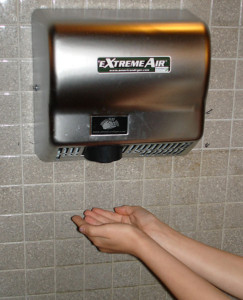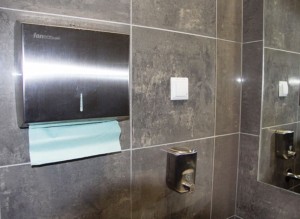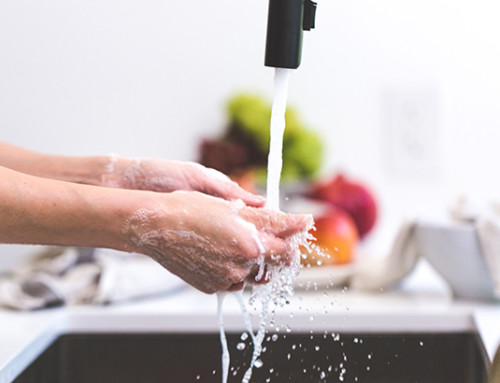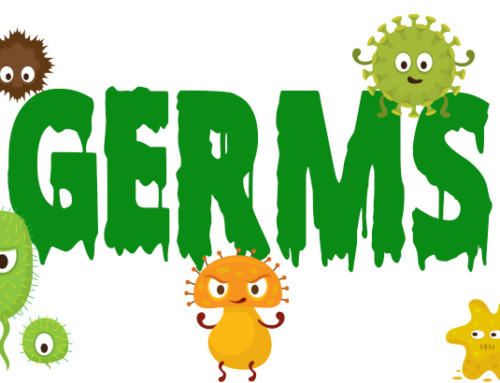It seems the way we dry our hands in public restrooms is up for debate these days. You probably think of all the nuisances you have come across when trying to dry your hands in a public restroom: the hand dryer isn’t warm enough or not powerful enough, the paper towel dispenser is empty, or you have to wave your hands under the automatic towel dispenser 15 times before it senses you, and kicks out a fraction of the amount needed to completely dry your hands.
Everyone is trying to be environmentally conscious, so the move towards hand dryers instead of paper towels seems like a good idea, right? Sure, in the environmentally conscious sense, yes. But what’s the bacterial effect on your freshly cleaned hands?
The Battlefield Study

Westminster University completed a study comparing the bacterial transmission of electric hand dryers to paper towels. Their study found that electric hand dryers in public restrooms can dramatically increase the number of bacteria on hands after washing them, and in turn, increase the likelihood of transmission of bacteria, including potentially pathogenic types.
In the study, scientists compared the number of bacteria on a person’s hands before and after they washed them, then dried them in a public restroom using paper towels, a traditional warm air dryer, and a jet air dryer.
Their findings were as follows:
- After washing and drying hands under a warm air dryer, the total number of bacteria increased on average by 194% on the finger pads and 254% on the palms.
- After washing and drying hands with a jet air dryer, the total number of bacteria increased on average by 42% on the finger pads and 15% on the palms.
- After washing and drying hands with a paper towel, the total number of bacteria was reduced between 51% and 75% on the finger pads, and between 48% and 77% on the palms.
In addition, the researchers studied the likelihood of transmission of bacteria, depending on the method of drying hands. They found that the jet air dryer was capable of blowing microorganisms from the hands and the unit itself up to 2 meters away, which could contaminate other people in the restroom. The warm air dryer could blow microorganisms up to .25 meters away, and the paper towels shows no significant spread of microorganisms.
The Winner
 Obviously, it seems that paper towels are the best method for drying hands when it comes to reducing germs and microbe transmission. A survey in some major European markets found that at least 63% of people confirmed that when offered the choice, would prefer to use paper towels to dry their hands in a public restroom. But what about the environment? And what does this study mean for public restrooms in different types of facilities?
Obviously, it seems that paper towels are the best method for drying hands when it comes to reducing germs and microbe transmission. A survey in some major European markets found that at least 63% of people confirmed that when offered the choice, would prefer to use paper towels to dry their hands in a public restroom. But what about the environment? And what does this study mean for public restrooms in different types of facilities?
The use of hand dryers should be carefully considered in locations where hygiene is extremely important, such as hospitals, clinics, care facilities, etc. It should also be a consideration in restaurants and bars.
On the flip side, the environment should be taken into consideration, and the effect on the environment when using paper towels in every restroom. One solution is offering the automatic hand sanitizing stations before you exit or just outside of a public restroom. It gives people one more chance to disinfect their hands after drying them. On top of that, you can always carry around your own hand sanitizer or sanitizing wipes to clean your hands whenever you feel like it.
A Fun Experiment
 To make your own science experiment, try performing a similar study using TSA/RB dipslides. First, wash your hands and dry them using a standard warm air dryer. Then test your palms with a dipslide, and your fingers pads with another dipslide. Label each vial with the drying method and the part of your hand tested.
To make your own science experiment, try performing a similar study using TSA/RB dipslides. First, wash your hands and dry them using a standard warm air dryer. Then test your palms with a dipslide, and your fingers pads with another dipslide. Label each vial with the drying method and the part of your hand tested.
Next, wash your hands and dry them using a jet air dryer. Again, test your palms and finger pads, and label each vial. Finally, wash your hands and dry them with a paper towel. Test your palms and finger pads, and label each vial. Try to perform various activities that might dirty your hands between tests, for example, touching soil, door knobs, keyboards, phones, etc. Shake hands with someone or simply do day-to-do things for a bit. This will help ensure the test is more accurate, rather than washing your hands immediately after just washing, over and over again.
Incubate the vials for 24-48 hours, or leave them out at room temperature for up to 5 days. Are the results similar to that of the Westminster study?
Try creating your own poll of family, friends and classmates. Which method do they prefer to use to dry their hands? Before telling them your results, try asking them which method they think is most sanitary. What do the poll results show? Similar polls in conjunction with the studies performed by Westminster show that just over 50% of people believe the hand dryers are more sanitary. Are your results similar?
As always, we love to give you a little bacterial food for thought. Enjoy!
‘A comparative study of three different hand drying methods: paper towel, warm air dryer, Dyson Airblade dryer’ was conducted by Keith Redway and Shameem Fawdar of the School of Biosciences, University of Westminster, London towards the end of 2008. The independent research was commissioned by the European Tissue Symposium (ETS), a trade body representing 90% of Europe’s tissue industry.







With everybody so worried about the condition nowadays there is an ever increasing number of peoples considering ways this should be possible. One such idea is that of utilizing hand dryers rather than paper towels as it will diminish the amount of paper that is ending up in the garbage.